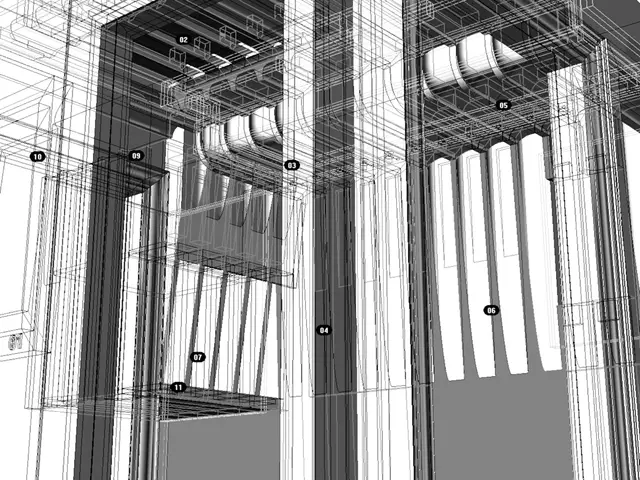Ethereum Confronts Imminent Congestion in Its Staking Process
In the world of cryptocurrency, Ethereum (ETH) continues to make headlines as its staking market experiences a significant surge. Here's a roundup of the latest developments in the ETH staking landscape.
Ether.fi, an innovative platform, has recently exceeded $11 billion in Total Value Locked (TVL), boosting the potential of ETHFI. This growth comes as inflows are expected to remain massive, with entry queues not anticipated to decrease for the next couple of months.
One of the major players in the ETH staking market is Kiln, which currently manages over 1.6 million ETH, making it the fifth-largest ETH staker. However, on September 9, Kiln pre-emptively unstaked all of its ETH, causing the exit queue to jump from 500,000 ETH to over 2.5 million tokens. It's unclear when Kiln will reintroduce their ETH holdings into the staking queue, but the impact, while temporary, could potentially strain the staking queue.
Bitmine Immersion, a DAT company, holds the most Ether with $9.9 billion worth of the asset, followed closely by Digital Asset Treasuries (DATs) which collectively own 4.99 million ETH, worth $22.97 billion, across companies such as Bitmine Immersion, Ether Machine, and Sharplink Gaming.
Lido (stETH) controls approximately 24% of all staked ETH with $37 billion TVL, showing sustained demand. Rocket Pool's rETH, on the other hand, has $2.8 billion TVL, emphasising decentralization with a greater number of solo stakers than Lido.
The Composite Ether Staking Rate (CESR) currently indicates that staking Ether yields 2.91% annually. Renzo's ezETH offers higher yields of ~3.5-5.5% versus native staking's ~2.8%, making it an attractive option for many ETH holders.
The entry queue for Ether staking on the network currently stands at 422,143 tokens, worth $1.94 billion. This growth in the staking market has also attracted institutional players such as Chorus One, an institutional staking provider, into the fray.
Looking ahead, the Securities and Exchange Commission (SEC) is expected to give approval to ETFs that will begin staking their assets this fall. This could potentially lead to a significant increase in participation, according to Mara Schmeidt's expectations.
Lastly, it's worth noting that Ethereum is now programmed to be a deflationary asset when usage is high enough. This, combined with the increasing trends in liquid staking, liquid restaking, and staking pool participation, suggests that the Ethereum staking market is poised for continued growth.
As always, it's essential to stay informed about these developments as they unfold. The Ethereum staking market is an exciting space to watch, and these trends paint a promising picture for the future of ETH.







